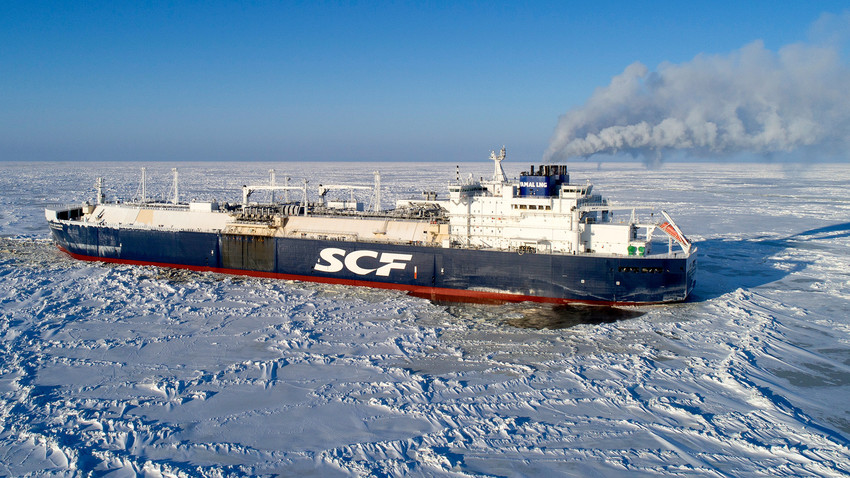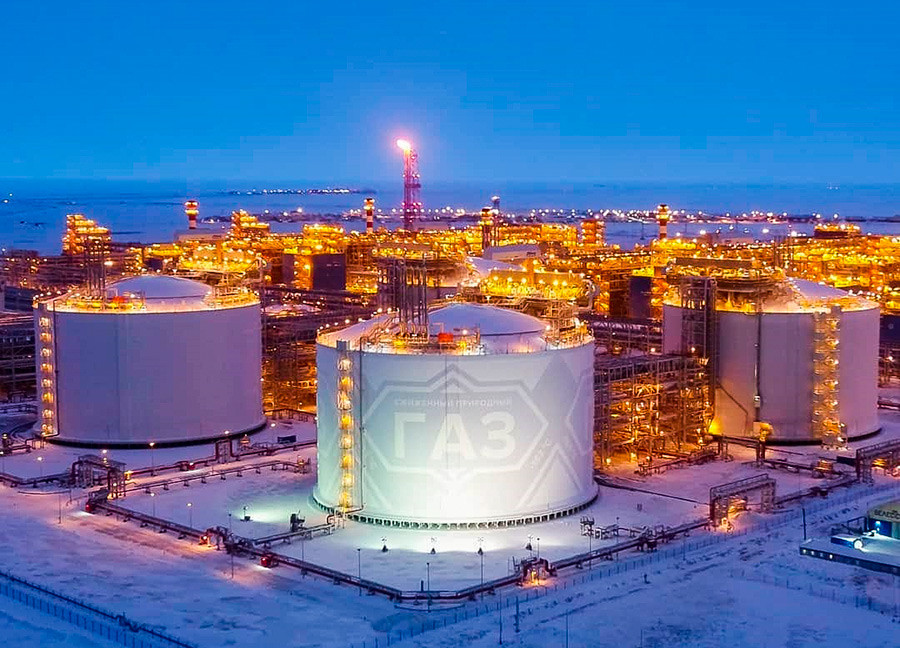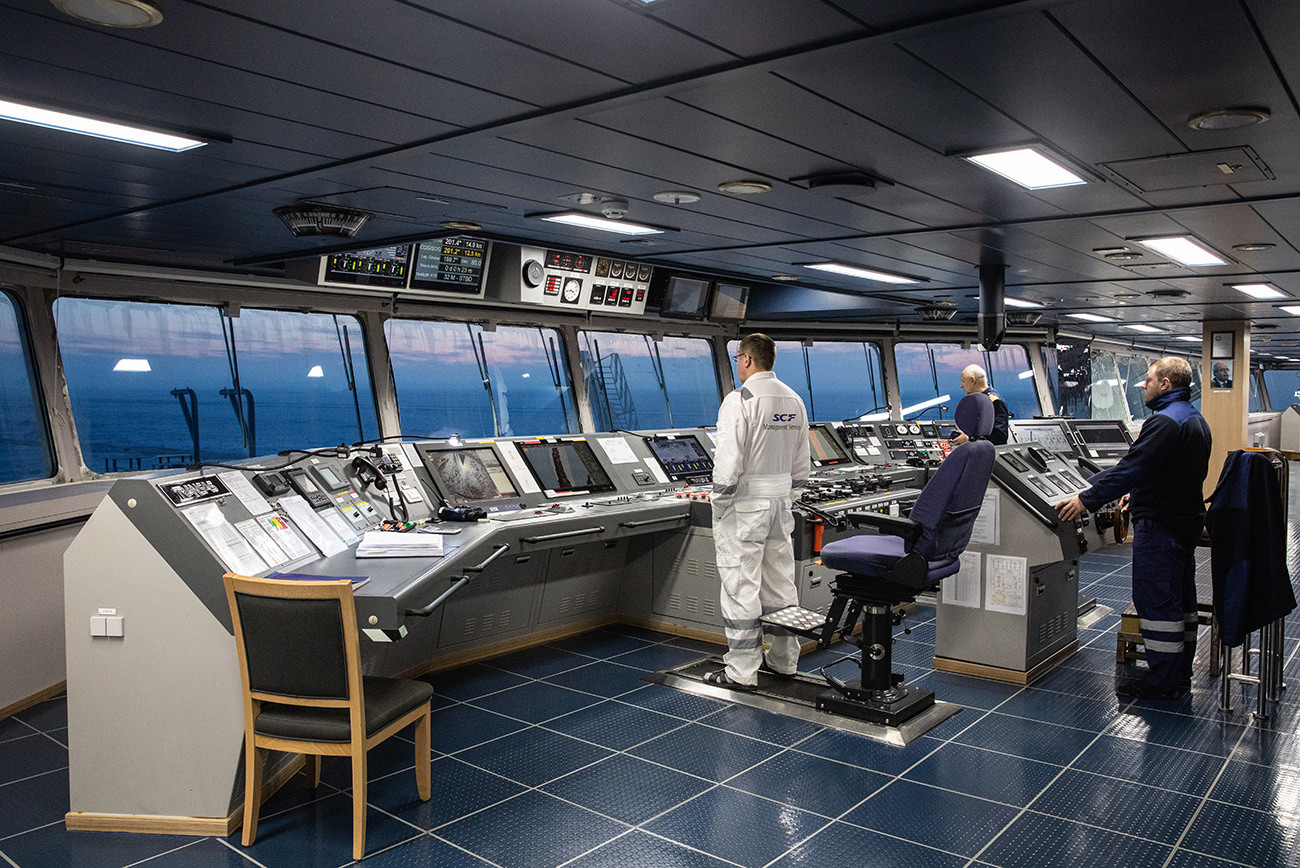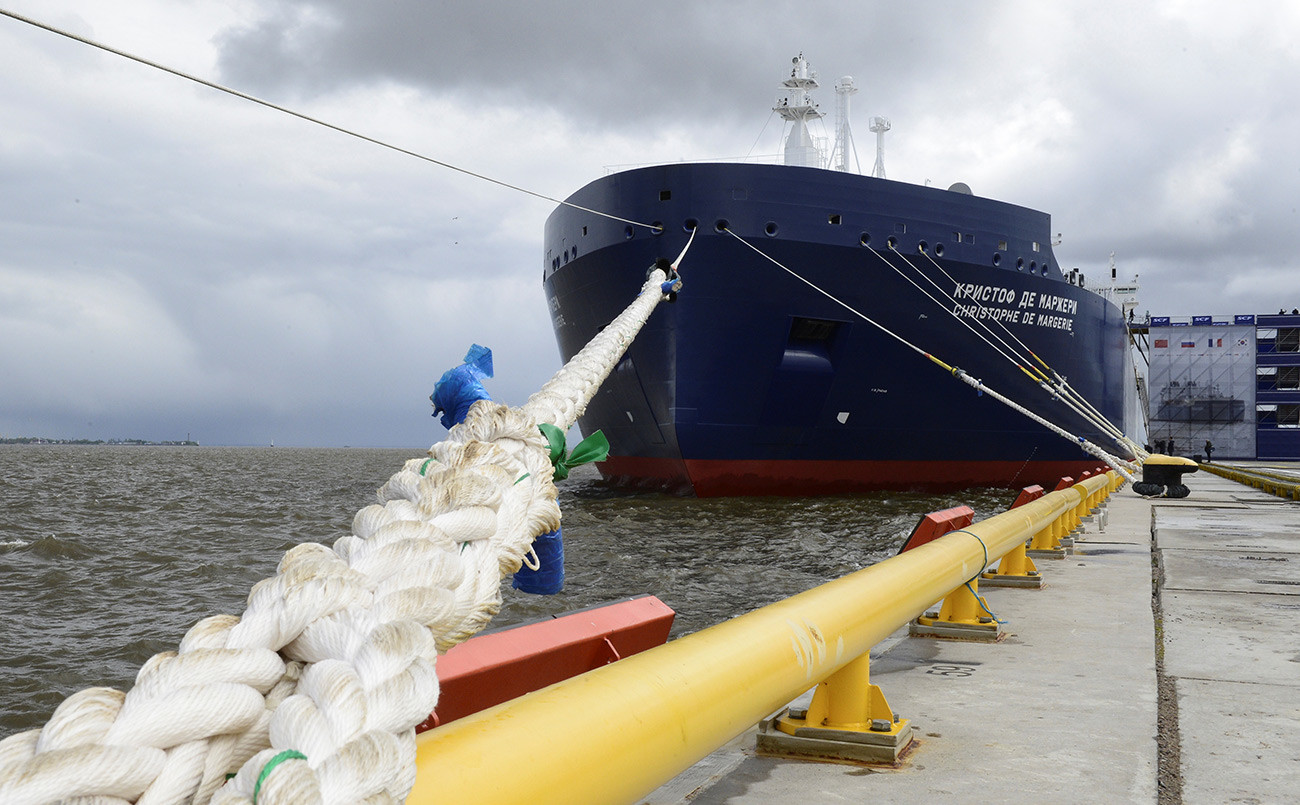I joined a crew of Russian sailors transporting liquid gas in the Arctic Ocean

On a freezing evening in early February, I found myself on the Yamal Peninsula, preparing for a voyage through the icy Arctic Ocean aboard one of the world's largest gas tankers, “Christophe de Margerie.
The vessel was loading liquefied gas from the Yamal LNG plant into its seemingly bottomless tanks. The plant was built a couple of years ago in the village of Sabetta on the Gulf of Ob. The darkness of the polar night, the tangle of gigantic pipes and steel trusses, the blinding searchlights, and the sparkle of the prickly snow hitting my face created an eerie atmosphere. The icy gangplank seemed endless – to reach the ship, which was creaking in the choppy waters, I had to climb four stories.
Once on board, I was met by several broad-shouldered watchkeepers. They were wearing padded red and blue overalls with hoods covering their heads so their faces were obscured. The smallest of them stretched out a small gloved hand and said in a low voice: "I will take you to the captain." I hurried after her, one of just four women on board the ship, stumbling over metal bulkheads. A voyage to Norway on a tanker loaded with almost 200,000 tons of gas for customers in Europe lay ahead. What had I signed up for?
A week later

I was spending my seventh evening of the icy voyage in the cabin, admiring the pitch-black polar night through the porthole. Somewhere in the bowels of the ship a diesel engine was booming. A fierce northern wind howled outside.
“Hard work” takes on a completely different meaning onboard a gas
Navigating the ice

“Christophe de Margerie” is the first gas tanker in a series of 15 similar vessels (ten are already working on the Northern Sea Route). It’s a joint project built by Sovcomflot, Yamal LNG, and Total with the support of Russian and Finnish institutes and shipbuilders. It boasts brilliant
They say this ship is capable of carrying enough liquefied gas in its four tanks to supply the whole of Sweden for a month. The gas is produced on the Yamal Peninsula, is liquefied at the Yamal LNG plant, and then sent to any countries that need it

The captain has no margin for error. His every movement, every turn of the Azipod joystick, every increase or decrease in engine speed must be perfect. He’s responsible for a huge tanker, the size of a
If using any of Russia Beyond's content, partly or in full, always provide an active hyperlink to the original material.
Subscribe
to our newsletter!
Get the week's best stories straight to your inbox